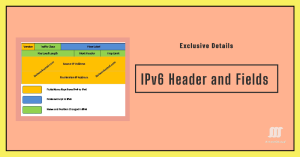IPv6 Header and Fields – Exclusive Details
As we discussed earlier, IPv6 is the improved version of the internet protocol. The IPv6 header is one of the significant improvements over the IPv4 header. The header format has been dramatically simplified. Some header fields have been removed, and others have moved to the optional IPv6 Extension Header. The IPv6 header is only twice […]

